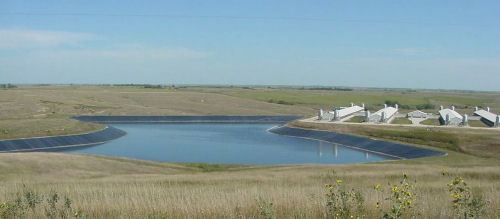Reprinted, with permission, from the proceedings of: Mitigating Air Emissions From Animal Feeding Operations Conference.

This Technology is Applicable To:
Species: Poultry, Dairy, Beef, Swine
Use Area: Animal Housing, Manure Storage
Technology Category: Facility Siting
Air Mitigated Pollutants: Odor, Hydrogen Sulfide, Ammonia
System Summary
MNSET predicts three separate air quality impacts. The first prediction is for odor impacts at any given distance downwind from the facilities. The second prediction is for the frequency of exceeding the MN state standard for hydrogen sulfide (30 ppb / 30-minute average not to be exceeded twice in a five day period). Although this may not be applicable for other states it does show relative impacts of hydrogen sulfide. Additionally, MNSET estimates both daily and annual pounds of hydrogen sulfide and ammonia emitted from the modeled facility. Remember however that the outputs of the models are only as valid as the inputs. A literature review was done to develop the flux values used in the model.
MNSET can be used to evaluate the impact of existing sites and quantify reductions of these impacts using various treatment technologies. Unfortunately, this requires reliable quantification of the emission reductions from the mitigation technologies.
Applicability and Mitigating Mechanism
- Tool for predicting air quality impacts for odor, hydrogen sulfide and ammonia
- Allows for adding mitigation to reduce these impacts
- Free downloadable spreadsheet
- User can add new technologies
Limitations
- Based on average flux values
- Conservative predictions
- Based on Minnesota weather conditions and regulations
Cost
This software can be downloaded free at University of Minnesota Manure Management. The use of MNSET to evaluate the downwind impacts of any mitigation technologies is very valuable both in new construction and in solving existing air quality problems.
Authors
David Schmidt and Larry Jacobson, University of Minnesota
Point of Contact:
David Schmidt, schmi071@umn.edu
The information provided here was developed for the conference Mitigating Air Emissions From Animal Feeding Operations Conference held in May 2008. To obtain updates, readers are encouraged to contact the author.



